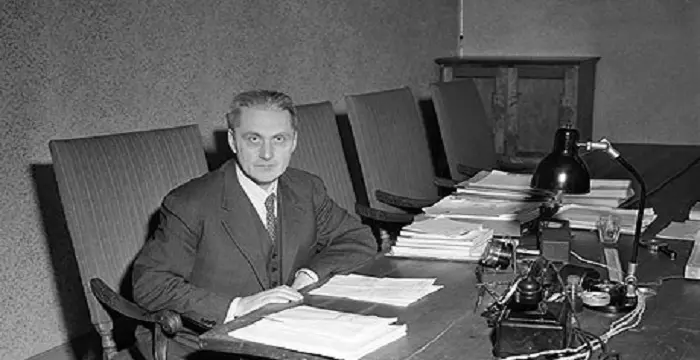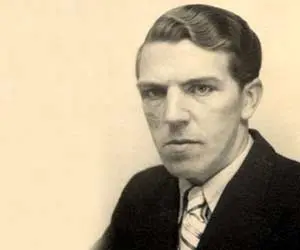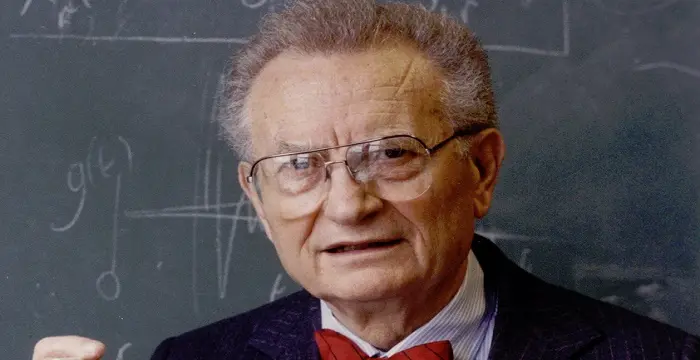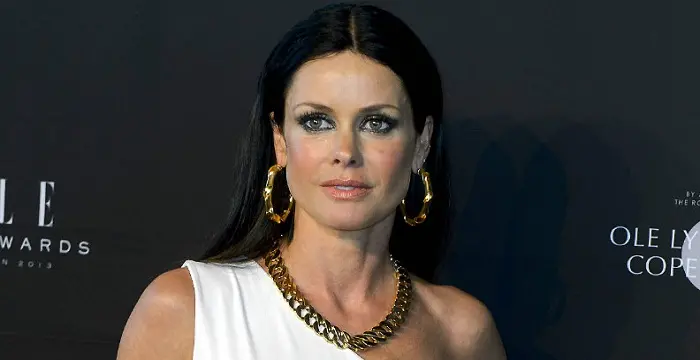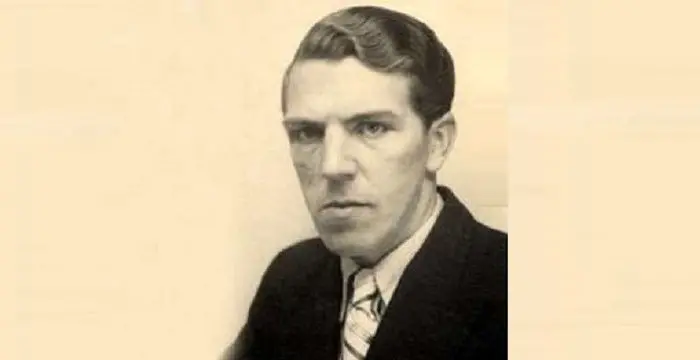
Trygve Haavelmo - Norwegian Men, Birthday and Facts
Trygve Haavelmo's Personal Details
Known for being one of the geniuses in the field of econometrics, he won the Nobel Prize in 1989
| Information | Detail |
|---|---|
| Birthday | December 13, 1911 |
| Died on | July 26, 1999 |
| Nationality | Norwegian |
| Famous | Intellectuals & Academics, Economists, Norwegian Men |
| Universities |
|
| Birth Place | Skedsmo |
| Gender | Male |
| Sun Sign | Sagittarius |
| Born in | Skedsmo |
| Famous as | Economist |
| Died at Age | 87 |
// Famous Norwegian Men
Herman Tommeraas
Herman Tommeraas is a Norwegian actor and model. Check out this biography to know about his birthday, childhood, family life, achievements and fun facts about him.
Martinus Gunnarsen
Martinus Gunnarsen is a Norwegian singer and the twin brother of Marcus Gunnarsen, better known as M&M. Let’s take a look at his family, personal life, music career, achievements, and some fun facts.
Ragnar Frisch
Ragnar Frisch was a renowned Norwegian economist who founding the discipline of econometrics. Check out this biography to know about his childhood, family life, achievements and other facts related to his life.
Trygve Haavelmo's photo
Who is Trygve Haavelmo?
Trygve Haavelmo was a Norwegian economist and a professor who received the Nobel Prize in 1989 for his contributions in the field of economics. He is believed to be the first Nobel Prize awardee for the econometric work. He spent a majority of his life in relative obscurity until he received the Nobel Prize and shot to limelight, particularly in his native Norway. Thereafter, he tried his utmost to avoid publicity and public debate. He was also an excellent teacher continuing for two generations and hence, had a great influence on succeeding Norwegian economists. His students considered him their role model and most of them dreamt of following in his footsteps. Throughout his life he had motivated many students to pursue economics as their field of interest. His intelligence and keen interest in the study of economics gave rise to innovative approaches for the development of economic issues. He opened up econometrics with special emphasis on mathematics and statistics in the formation of economic theories. Taking his work into account he has carved a prominent position for himself in economics. Continue reading to learn more of his life and works.
// Famous Intellectuals & Academics
Bertil Gotthard Ohlin
Bertil Gotthard Ohlin was a famous Swedish economist. This biography profiles his childhood, family life & achievements.
Emily Greene Balch
Emily Greene Balch was an American economist, sociologist and pacifist who won the 1946 Nobel Peace Prize. This biography of Emily Greene Balch provides detailed information about her childhood, life, achievements, works & timeline.
Martin Buber
One of the greatest philosophers to have ever walked on earth, Martin Buber contributions to philosophy is a long-standing one. Explore all about his profile, childhood, life and timeline here.
Biography detail
Trygve Haavelmo’s Childhood And Early Life
Haavelmo was born in Skedsmo near Oslo, Norway, in the year 1911. After completing his primary education, he, in 1930, enrolled at the University of Oslo, eventually graduating with a degree in economics. On the recommendation of Ragnar Frisch, Haavelmo joined Frisch’s Institute of Economics as one of his assistants. He was then appointed the head of computations in the institute, in the year 1935. The next year, along with Jerzy Neyman and Egon Pearson, he studied at the department of statistics at the London University College. He then undertook a study tour to Berlin, Geneva and Oxford in the year 1938.
From 1938 to 1939, he served as a lecturer in Statistics at the University of Aarhus. The following year he received a scholarship and left for the U.S on a study trip, which he thought would not last more than 1 ½ years. During his stay, he spent his time working at the Cowles Commission. He received the Rockefeller fellowship and for a year, he travelled around and worked at Harvard. From 1942-1944, he worked as a statistician at Nortraship’s office in New York and after that he became a commercial secretary at the Norwegian Embassy in Washington D.C, where he worked for two more years. During this period, he worked and published his most notable work on econometrics on which his fame lasts to this day.
Later Life
He then returned to Oslo and took up a job in the trade department and stayed in the University of Oslo till 1979. During his tenure as a professor, his research interests turned to economic theory and published a book titled ‘A Study in the Theory of Economic Evolution’, which was considered to be quite innovative and methodological. It was an excellent study of economic underdevelopment of a country in relation to other countries.
His probability approach in econometrics introduced a basis of probability in the analysis of economic relations. He is particularly known for his work in identification problems and analysis of economic equations. His ideas and theories became an important factor in the research activity at the Cowles Commission, where he worked in 1946, in Chicago. He worked as the head of a division under the Ministry of Finance in Norway, where his job involved coordinating and implementing the post-war planning regime. He also had theoretical interests in macroeconomics. In 1954, his work, ‘A Study in the Theory of Economic Evolution’ brought forward a new approach to economic development issues. In 1960, he published a book titled, ‘A study in the Theory of Investment’, which was linked to the supply side of the capital goods market. Both of these works brought him credit and recognition to some extent.
Major Works
- The Method of Supplementary Confluent Relations, 1938
- The Inadequacy of Testing Dynamic Theory by Comparing the Theoretical Solutions and Observed Cycles, 1940
- Statistical Testing of Business Cycles, 1943
- The Statistical Implications of a System of Simultaneous Equations, 1943
- The Probability Approach in Econometrics, 1944
- Multiplier Effects of a Balanced Budget, 1945
- Family Expenditures and the Marginal Propensity to Consume, 1947
- Methods of Measuring the Marginal Propensity to Consume,1947
- Statistical Analysis of the Demand for Food: Examples of Simultaneous Estimation of Structural Equations, with M.A. Girshick, 1947
- Family Expenditures and the Marginal Propensity to Consume, 1947
- Quantitative Research in Agricultural Economics: The Interdependence between Agriculture and the National Economy, 1947
- The Notion of Involuntary Economic Decisions,1949
- A Note on the Theory of Investment, 1950
- The Concepts of Modern Theories of Inflation, 1951
- A Study in the Theory of Economic Evolution, 1954
- The Role of the Econometrician in the Advancement of Economic Theory, 1958
- Econometrica, A Study in the Theory of Investment, 1960
- Business Cycles II: Mathematical Models, 1968
- Variation on a Theme by Gossen, 1972 (Swedish)
- What Can Static Equilibrium models Tell Us?, 1974
- Econometrics and the Welfare State, 1990
Haavelmo’s – Probability Approach
The probability approach has been one of his key works, regarded as one of his major contributions. The approach deals with the fact that one should foresee existing economic data as being ‘a sample selected by nature’ and is governed by the reality, which was unnoticeable. He indicated that the validity of economic theories can be tested by framing the theoretical model to the statistical relationships. The approach signifies that the relationship between theory and reality is similar to the relationship between the observed data and that reality. This approach gives a conclusive statistical theory that if we effectively say that we have ‘reproduced’ another ‘natural drawing’ from the reality then the theoretical relationships are more or less true.
Major Contribution
His main contributions were the two articles, one which showed the statistical implications of simultaneous equations and the other which bases econometrics firmly on probability theory. His temporary stay in the US resulted in the book entitled ‘The Probability Approach in Econometrics’. In this he penned many of the methods, which were used in economics but theorized that all these techniques were deceptive. Economics had not acknowledged the interaction of multiple economic relations and economic laws were not rigid. His major contribution was the introduction of a new approach to approximate economic relations by applying mathematical statistics. After this he continued developing his interest towards economic theory. His book ‘A Study in the Theory of Economic Evolution’ dealt with the study of the causes of underdeveloped economy of a specific country in comparison to others. His contribution in the area of economics was the ‘Balanced Budget Multiplier Theorem’, which was a new approach in the business cycle theory.
Another major contribution was the ‘Theory of Investment’. His book entitled ‘A Study in the Theory of Investment’ coined the demand for the actual capital, the indisposition in the modification of the real capital. His work and writings on the investment behavior and on environmental economics have inspired further research work, which has led to the development of new theories.
Death
Trygve Haavelmo died at the age of 87, on July 28, 1999, in the city of Oslo, Norway.
Awards & Accolades
In the year 1989, Haavelmo received the Nobel Prize and the Sveriges Riksbank Prize in Economic Science for the illumination of the probability theory foundations of econometrics and the analyses of co-occurring economic structures.
// Famous Economists
Bertil Gotthard Ohlin
Bertil Gotthard Ohlin was a famous Swedish economist. This biography profiles his childhood, family life & achievements.
Emily Greene Balch
Emily Greene Balch was an American economist, sociologist and pacifist who won the 1946 Nobel Peace Prize. This biography of Emily Greene Balch provides detailed information about her childhood, life, achievements, works & timeline.
Paul Samuelson
Nobel laureate Paul Anthony Samuelson is referred to as the ‘Father of Modern Economics’. This biography profiles his childhood, life, career, achievements and interesting facts about him.
Trygve Haavelmo's awards
| Year | Name | Award |
|---|---|---|
Other | ||
| 0 | Nobel Memorial Prize in Economic Sciences | |
// Famous Norwegian peoples
Herman Tommeraas
Herman Tommeraas is a Norwegian actor and model. Check out this biography to know about his birthday, childhood, family life, achievements and fun facts about him.
Hilde Osland
Hilde Osland is a Norwegian Instagram celebrity, model, singer, and dancer. Check out this biography to know about her birthday, childhood, family life, achievements and fun facts about her.
Martinus Gunnarsen
Martinus Gunnarsen is a Norwegian singer and the twin brother of Marcus Gunnarsen, better known as M&M. Let’s take a look at his family, personal life, music career, achievements, and some fun facts.
Ragnar Frisch
Ragnar Frisch was a renowned Norwegian economist who founding the discipline of econometrics. Check out this biography to know about his childhood, family life, achievements and other facts related to his life.
IamSanna
"IamSanna" is the online pseudonym of Sanna, the ‘YouTube’ star from Norway. Find more about her family, personal life, including age, birthday, etc.
Lene Nystrøm
Lene Nystrøm is a Norwegian singer, songwriter, and musician. Check out this biography to know about her childhood, family life, achievements and fun facts about her life.
Trygve Haavelmo's FAQ
What is Trygve Haavelmo birthday?
Trygve Haavelmo was born at 1911-12-13
When was Trygve Haavelmo died?
Trygve Haavelmo was died at 1999-07-26
Where was Trygve Haavelmo died?
Trygve Haavelmo was died in Oslo, Norway
Which age was Trygve Haavelmo died?
Trygve Haavelmo was died at age 87
Where is Trygve Haavelmo's birth place?
Trygve Haavelmo was born in Skedsmo
What is Trygve Haavelmo nationalities?
Trygve Haavelmo's nationalities is Norwegian
What was Trygve Haavelmo universities?
Trygve Haavelmo studied at University of Oslo
What is Trygve Haavelmo's sun sign?
Trygve Haavelmo is Sagittarius
How famous is Trygve Haavelmo?
Trygve Haavelmo is famouse as Economist


